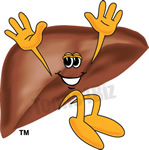The more you know about Hepatitis, the more you can do to reduce your risks for long term illness and associated health issues. Viral hepatitis is the leading cause of liver cancer and the most common reason for liver transplantation. It is estimated that 4.4 M Americans are living with chronic hepatitis, most don’t know they are infected.
What is Hepatitis?
Hepatitis means inflammation of the liver and also refers to a group of viral infections that affect the liver.
What are the common types of Hepatitis?
- Hepatitis A
- Hepatitis B
- Hepatitis C
What are the most common symptoms of Hepatitis?
- Fever.
- Fatigue.
- Loss of Appetite.
- Nausea.
- Vomiting.
- Abdominal Pain.
- Joint Pain.
- Jaundice.
- Gray-colored bowel movements.
What are the differences between Hepatitis types?
They are different like A,B & C
Hepatitis A (HAV)
Mode of transmission: Ingesting contaminated food or water, or coming into contact with contaminated fecal matter.
Vaccination: Available
Duration: a few weeks
Treatment: HAV gets better usually within a few weeks without treatment.
Severity: Most persons with acute disease recover with no lasting liver damage, it is rarely fatal.
Hepatitis B (HBV)
Mode of transmission: Contact with infected body fluids like blood, semen through:
- Birth to an infected mother.
- Sexual contact with an infected person.
- Sharing of contaminated needles, syringes or any other infected drug injection device or tool.
- Other infected sharp instruments by injury.
Vaccination: Available
Duration: a few weeks to lifelong illness.
Treatment: Since HBV could be acute or chronic, treatments vary including monitoring of liver signs or disease progression and using antiviral drugs.
Severity: 15% to 25% of infected persons develop chronic liver disease like cirrhosis, liver failure or liver cancer.
Hepatitis C (HCV)
Mode of transmission: Contact with infected body fluids like blood, semen through:
- Birth to an infected mother.
- Sexual contact with an infected person.
- Sharing of contaminated needles, syringes or any other infected drug injection device or tool.
- Other infected sharp instruments by injury.
- Using an infected person’s razor, toothbrush or nail clippers.
Vaccination: Not Available
Duration: a few weeks to a serious lifelong illness.
Treatment: Treatments vary including monitoring of liver signs or disease progression and using antiviral drugs. New promising drugs are available on the market to treat HCV infections.
Severity:
60% to 70% of chronically infected persons develop chronic liver disease like cirrhosis, liver failure or liver cancer.
- 5% to 20% develop cirrhosis over a period of 20 to 30 years.
- 1% to 5% will die from cirrhosis or liver cancer.

